- Home
- Articles
- Architectural Portfolio
- Architectral Presentation
- Inspirational Stories
- Architecture News
- Visualization
- BIM Industry
- Facade Design
- Parametric Design
- Career
- Landscape Architecture
- Construction
- Artificial Intelligence
- Sketching
- Design Softwares
- Diagrams
- Writing
- Architectural Tips
- Sustainability
- Courses
- Concept
- Technology
- History & Heritage
- Future of Architecture
- Guides & How-To
- Art & Culture
- Projects
- Interior Design
- Competitions
- Jobs
- Store
- Tools
- More
- Home
- Articles
- Architectural Portfolio
- Architectral Presentation
- Inspirational Stories
- Architecture News
- Visualization
- BIM Industry
- Facade Design
- Parametric Design
- Career
- Landscape Architecture
- Construction
- Artificial Intelligence
- Sketching
- Design Softwares
- Diagrams
- Writing
- Architectural Tips
- Sustainability
- Courses
- Concept
- Technology
- History & Heritage
- Future of Architecture
- Guides & How-To
- Art & Culture
- Projects
- Interior Design
- Competitions
- Jobs
- Store
- Tools
- More
Rahmah Library by The MAAK
The Rahmah Library in Cape Town’s District Six, designed by The MAAK, combines co-creative design with historical reclamation. Engaging students in the design process, it offers flexible, playful, and human-centered learning spaces while honoring the neighborhood’s cultural memory and fostering community resilience.
The Rahmah Library, located within the grounds of Rahmaniyeh Primary School in Cape Town’s historically significant District Six, represents a remarkable intersection of education, community engagement, and architectural innovation. District Six is an area marked by deep historical and socio-political narratives, having been dramatically reshaped during the Apartheid-era forced removals. Within this context, the Rahmah Library serves not only as an educational facility but as a symbol of resilience, memory, and reclamation, creating a new cultural and civic landmark in the neighborhood.
The project emerged from a collaborative vision: to design a user-oriented educational space in close consultation with the students who would inhabit it. The MAAK, alongside child-centered designer Xanelé Mennen from the Otto Foundation, engaged the learners as active participants in the design process. This co-creation strategy allowed the architects to gain invaluable insights into how children interact with learning spaces, fostering a sense of ownership and emotional connection between the users and their new library.
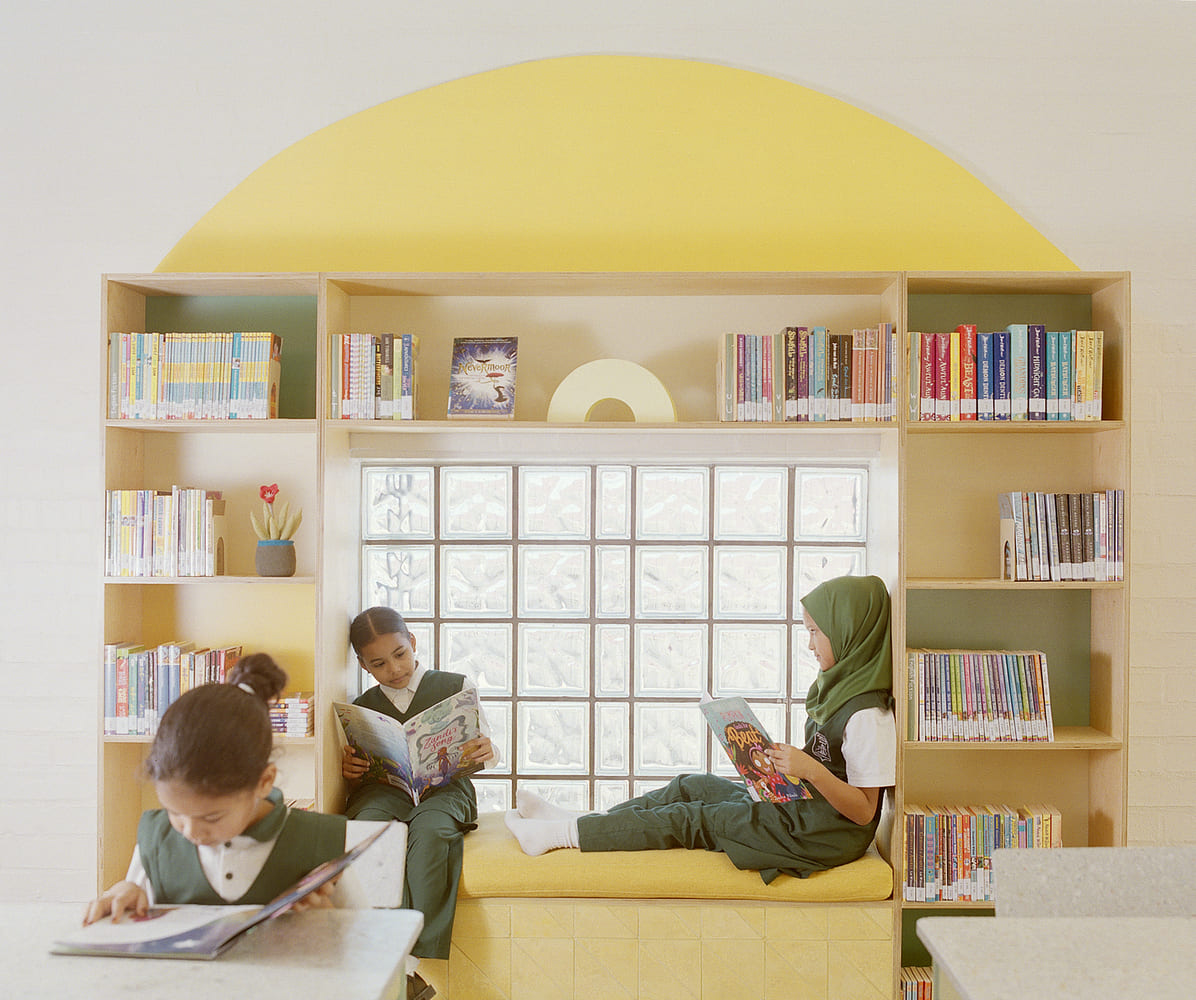
Table of Contents
ToggleArchitectural Concept and Form
The building is defined by a simple mono-pitched roof, whose slope rises toward the dramatic mountain vistas to the south while providing necessary shading from the intense northern sun. This elegant form situates the library within its broader environmental and climatic context, responding thoughtfully to natural light, solar gain, and the surrounding topography. A curving glass block wall leans out beneath the eastern elevation, articulating a welcoming entrance that doubles as a covered play zone for learners. This design gesture signals the library’s dual role as both an educational and communal hub, inviting exploration while protecting occupants from the elements.
Externally, the library is expressed through a nuanced palette of brick bonds, color variations, and textures, echoing the material language of the original Rahmaniyeh Primary School building—the oldest remaining school in District Six. By referencing existing architectural motifs, The MAAK ensures the new building harmonizes with its historical context while asserting a distinct contemporary identity.
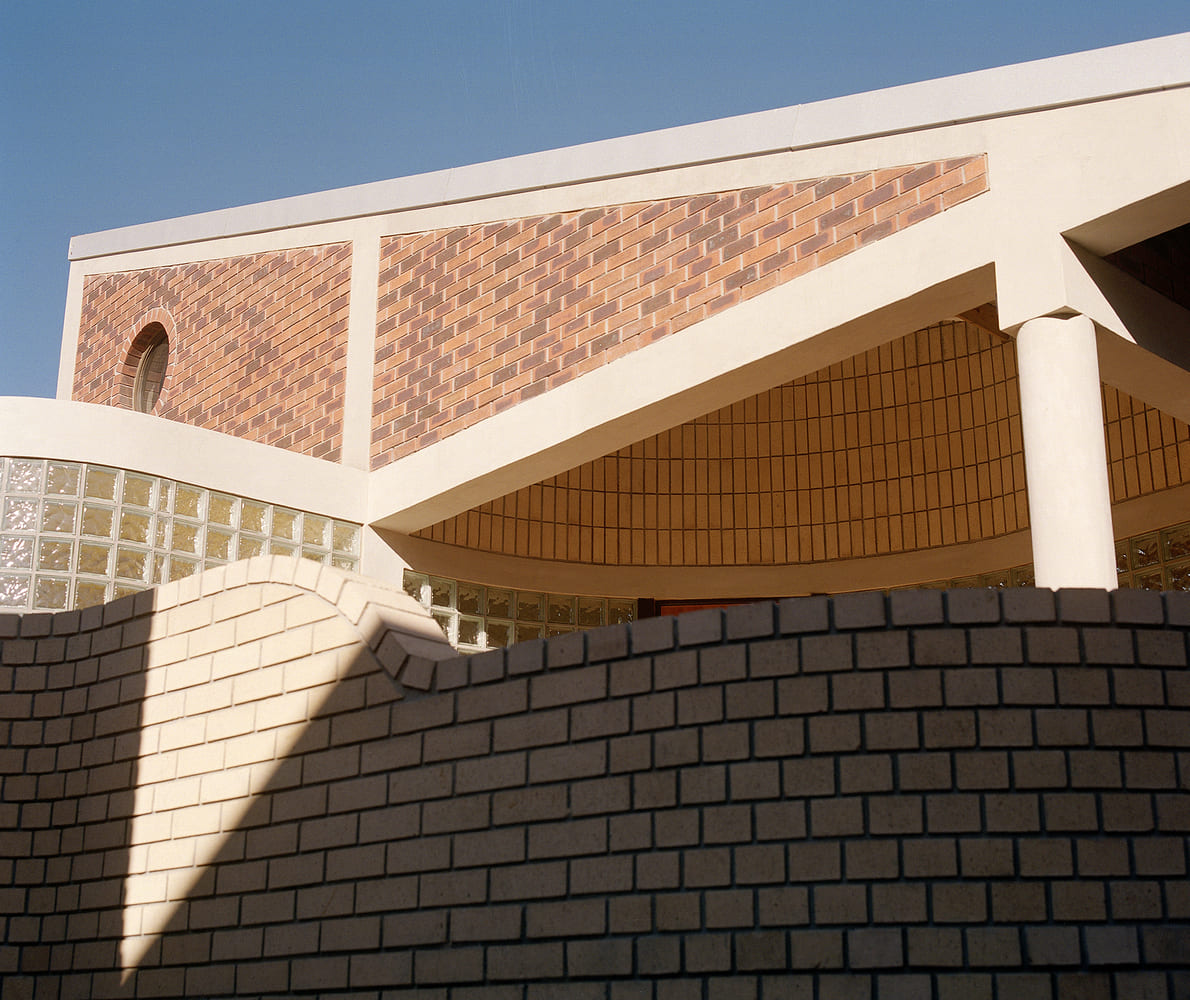
Interior Organization and Spatial Experience
Inside, the Rahmah Library unfolds as a single, generous volume, organized into key zones while maintaining a visual and spatial continuity. Subtle changes in floor levels, reflecting the slope of the site, allow the interior to accommodate a reception area, a sunken reading pit, a central library core, classroom zones, and a conversation lounge. These variations in level create intimate corners and open gathering spaces, supporting multiple modes of reading, learning, and social interaction. The design encourages children to adopt different postures—sitting, lounging, or gathering in groups—emphasizing the library’s flexible, playful, and human-centered qualities.
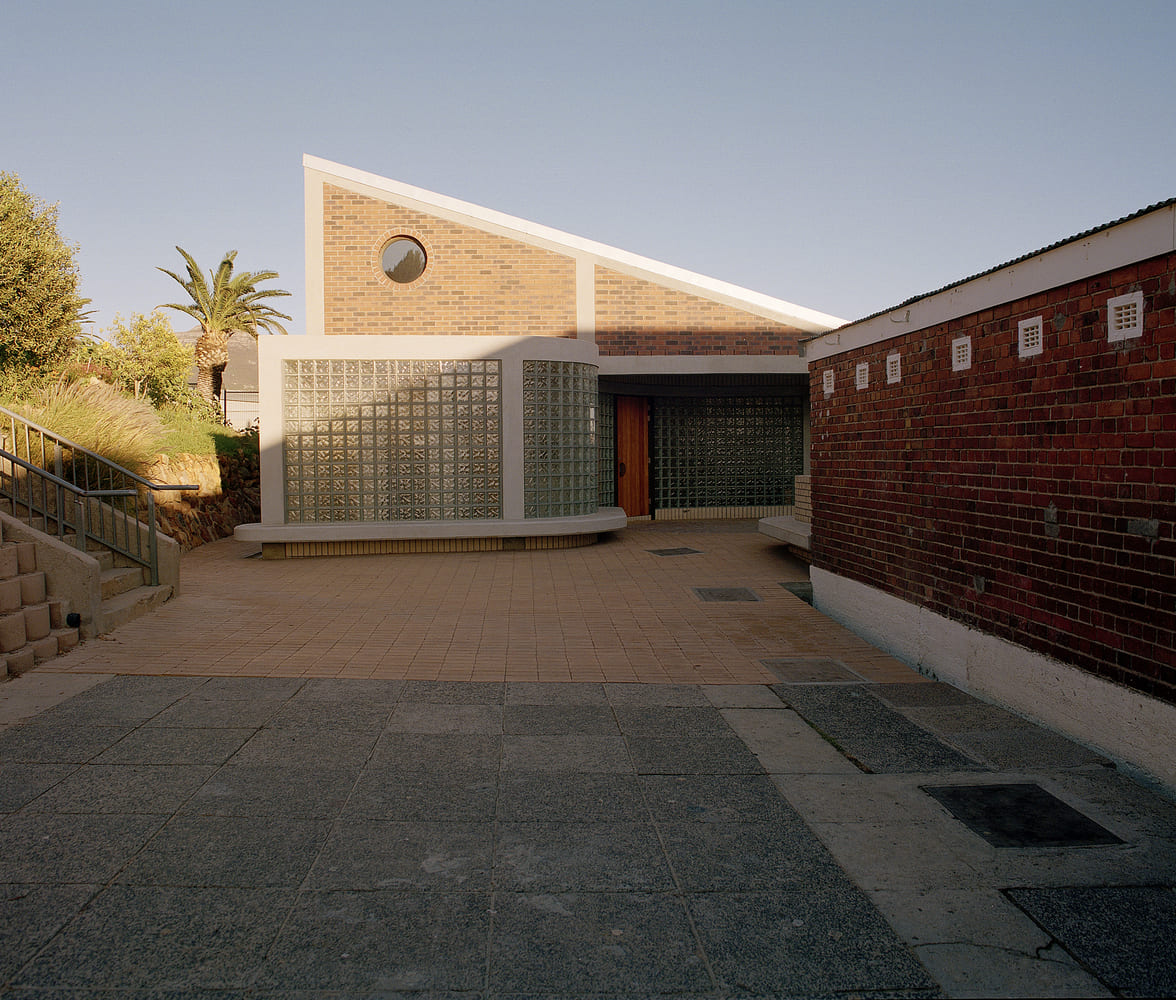
Co-Creation and User Engagement
A central feature of the project is its user-engagement methodology, which involved workshops where learners actively co-designed aspects of the library. Among the most iconic outcomes of this process are the “Rahmah-Rama” bookshelves, conceived by students and executed by local furniture designers Pedersen and Lennard. These shelves are emblematic of the library’s ethos: children are co-authors of their learning environment, resulting in spaces that are emotionally resonant and deeply meaningful. According to Xanelé Mennen, these workshops not only informed design decisions but built trust, a sense of agency, and excitement among the students, ensuring they felt a strong bond with the space from its earliest conception.

Cultural and Historical Reclamation
The Rahmah Library also embodies a strong cultural and historical narrative, reflecting District Six’s turbulent past. In collaboration with artist and land researcher Zayaan Khan, clay sourced from the surrounding neighborhood—including fragments from demolished homes—is transformed into door pushplates and decorative tiles. This approach extends to the creation of custom “District Six Bricks”, laid within the entrance lobby floor and external drinking fountain areas. These elements serve as both a tangible connection to the site’s history and a symbolic reclamation of space, grounding the library in the collective memory and identity of the community.
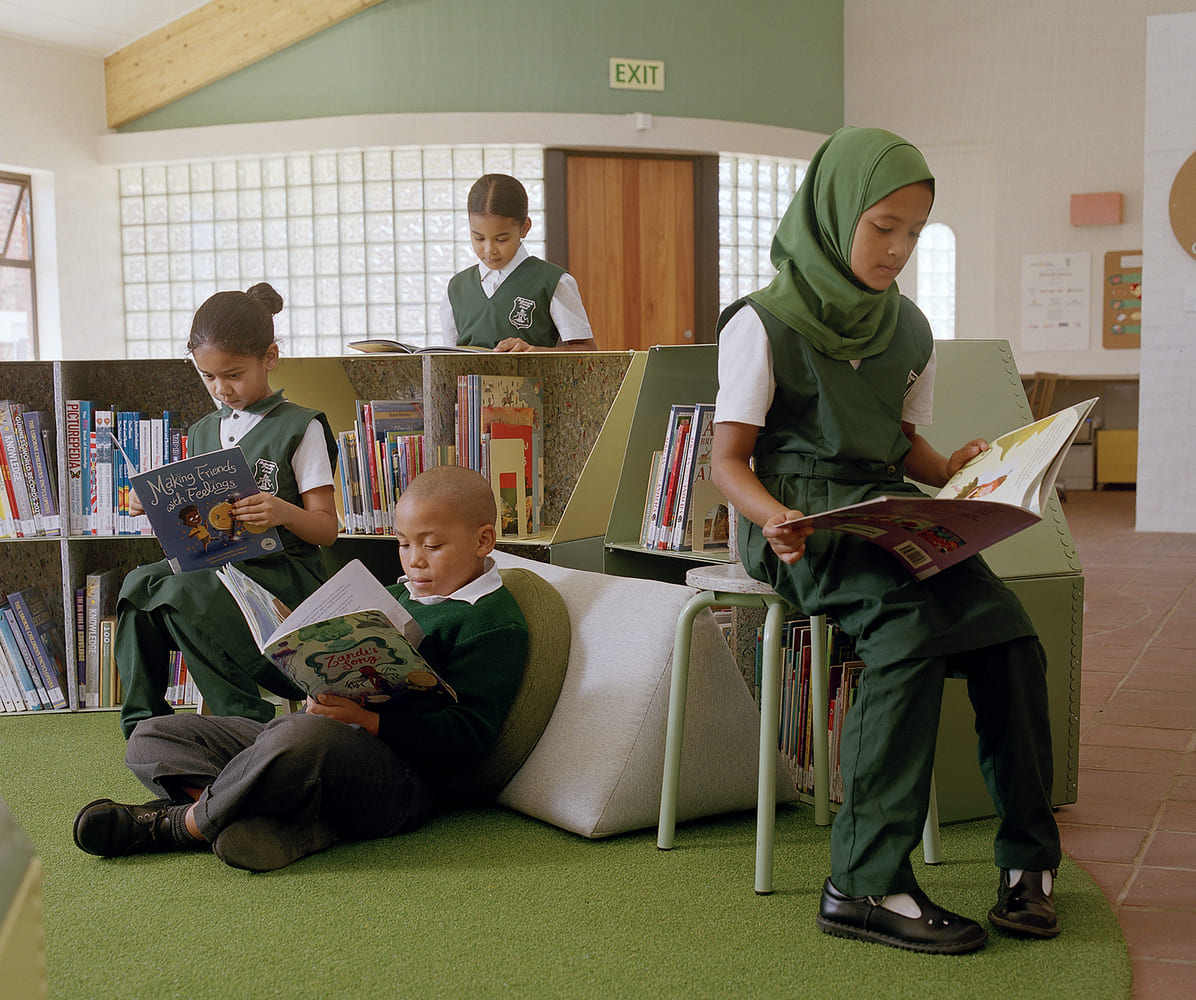
Materiality and Atmosphere
The library’s material palette combines warm, tactile elements such as timber, brick, and glass block, creating an environment that feels welcoming and nurturing. Variations in brick texture and bond, the natural grain of wood, and the diffused light through glass block walls foster a domestic scale and warmth, deliberately distancing the facility from the institutional feel of conventional school buildings. This approach ensures that the Rahmah Library is experienced as a home-like sanctuary for learning, where children can explore reading and imagination in comfort.

Impact and Legacy
Opened in 2025, the Rahmah Library marks a transformative milestone for Rahmaniyeh Primary School, which until recently lacked a dedicated library space for its 500+ learners. The building stands as a beacon of learning, creativity, and joy, demonstrating the impact of inclusive, participatory design. Through its sensitive response to topography, climate, history, and user needs, the library fosters a vibrant learning culture while symbolizing hope, resilience, and community engagement. Principal Shireen Jaffer describes the facility as “a home away from home,” capturing its significance as both an educational resource and a nurturing space for children.
By blending thoughtful architecture, co-creative processes, and contextually grounded interventions, the Rahmah Library exemplifies how educational facilities can be more than functional buildings—they can become catalysts for imagination, connection, and social cohesion.
Photography: Kent Andreasen
- Brick and timber architecture
- Cape Town architecture
- Child-centered design
- Co-creation workshops
- community engagement architecture
- Contemporary school buildings
- Cultural reclamation in architecture
- District Six
- educational architecture
- Flexible learning spaces
- Glass block walls
- Human Centered Architecture
- Inclusive learning spaces
- Local material integration
- Mono-pitched roof design
- participatory design
- Playful educational environments
- Rahmah Library
- South African schools
- The MAAK architects
I create and manage digital content for architecture-focused platforms, specializing in blog writing, short-form video editing, visual content production, and social media coordination. With a strong background in project and team management, I bring structure and creativity to every stage of content production. My skills in marketing, visual design, and strategic planning enable me to deliver impactful, brand-aligned results.
Submit your architectural projects
Follow these steps for submission your project. Submission FormLatest Posts
James Baldwin Media Library and Refugee House by associer
In Paris’s 19th arrondissement, Atelier Associer has reimagined a 1970s secondary school...
Library Design for Creating Community Spaces That Thrive
Explore how people-first library design turns libraries into civic living rooms. Learn...
SMVIT Library by Cadence Architects
SMVIT Library by Cadence Architects in India creates a porous, student-centered hub,...
SANAA Finishes Work on the Taichung Green Museumbrary
Japanese firm SANAA has completed the Taichung Green Museumbrary in Taiwan —...














































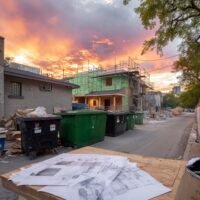
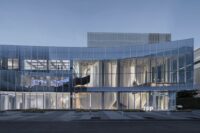
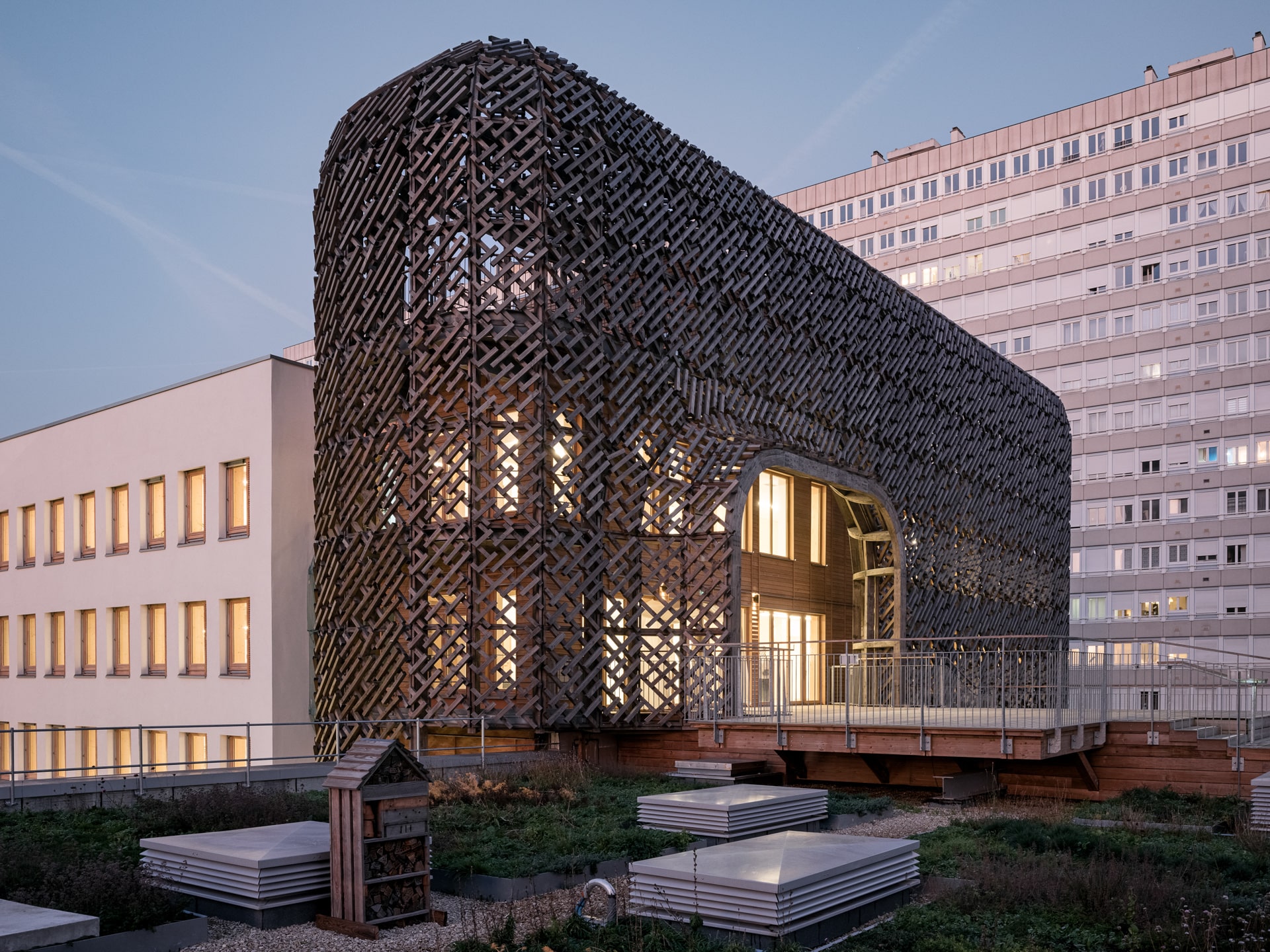


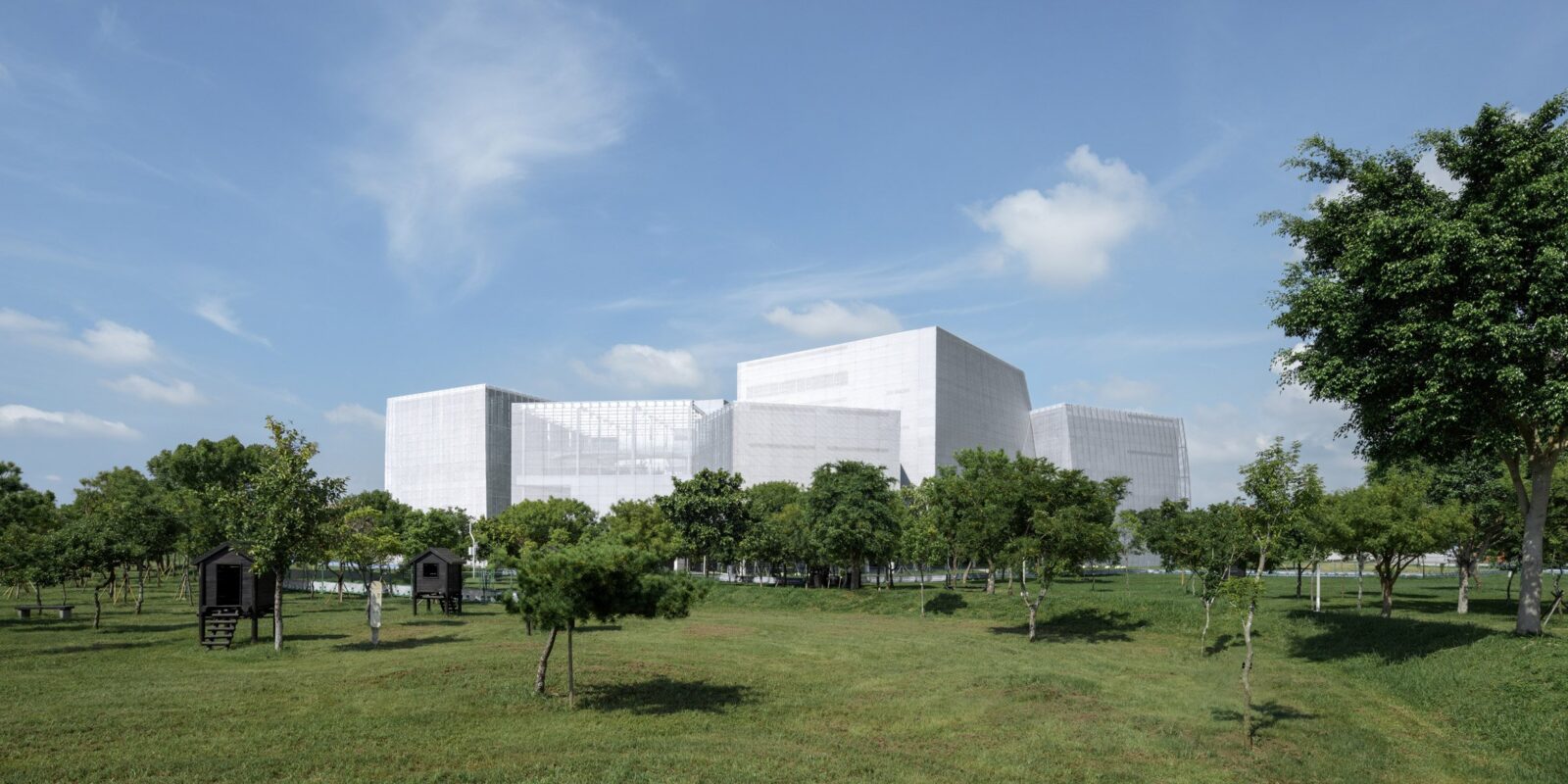
Leave a comment